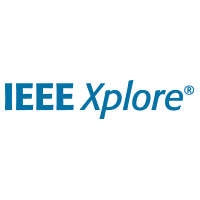Really interesting work the chinese are doing in developing EUV light sources.
Research and development of lithography machine: Harbin Institute of Technology is never absent in the country's urgent need
Harbin Institute of Technology has never been absent in the country's urgent need, and now the country urgently needs lithography machines. The emergence of the DPP-EUV light source of Harbin Institute of Technology is really an epic achievement. First-class universities should have the world's top level. This is the result of decades of accumulation of Harbin Institute of Technology in the field of ultra-precision machining and ultra-precision measurement!
A breakthrough has already been made in the lens and exposure system required by the lithography machine where the Changchun Opto-Mechanics of the Chinese Academy of Sciences is located, and the latest news also shows that the laboratory where Changchun Opto-Mechanics has built a set of EUV light source equipment.The Changchun Institute of Optics and Mechanics is developing EUV exposure machine based on Harbin Institute of Technology DPP-EUV light source, which is expected to be launched within two years. The two core components of the lithography machine are the dual workpiece stage and the exposure system.
EUV lithography is called extreme ultraviolet lithography (Extreme Ultra-violet), and there are two main types of light sources:
1. One is DPP-EUV extreme ultraviolet light source. Discharge excited plasma EUV extreme ultraviolet light source
The Dutch ASML lithography machine company and Harbin Institute of Technology are all researching this kind.
The DPP EUV light source uses discharge to make the load (Xe or Sn) form plasma, radiates ultraviolet rays, and uses a multilayer mirror to reflect and purify the energy spectrum to obtain 1 EUV light.
The advantages of the DPP EUV light source are high energy conversion efficiency for EUV generation and low cost; the disadvantage is that the electrode heat load is high, there are many fragments, the mechanism is complicated, the optical device is easily damaged, and the light collection angle is small.
2. Laser plasma light source (LPP)
The LPP EUV system mainly includes lasers, convergent lenses, loads, light collectors, masks, projection optical systems and chips.
The principle is to use a high-power laser to heat a load (Xe or Sn) to form plasma, which radiates ultraviolet rays, and uses a multilayer mirror to reflect and purify the energy spectrum to obtain 1 EUV light.
The advantages of the LPP EUV light source are the small size of the light source, fewer types of debris or particles, high light collection efficiency, and easier amplification of EUV output power. Of course, it also has shortcomings, mainly because the system design is complicated and expensive.
These 2 kinds of light sources. Harbin Institute of Technology researched 15 years ago!
Two main units of China's research on EUV extreme ultraviolet light source:
1. Harbin Institute of Technology National Key Laboratory of Tunable Laser Technology.
2. Shanghai Institute of Optics and Mechanics, Chinese Academy of Sciences (a researcher who graduated from Harbin Institute of Technology is responsible for the project, deputy director. One of the responsible persons of Shenguang 2).The major breakthroughs made by Harbin Institute of Technology are:The discharge excites the plasma EUV extreme ultraviolet light source. It is the same EUV extreme ultraviolet light source with the Dutch ASML Lithography Machine Company. But it will take 2 years to make it a lithography machine!For the Dutch lithography machine, the extreme ultraviolet light source is currently produced in the United States, and some main components are produced in Germany and other countries, and the cleaning components are produced by Lanying equipment. If the 3-5nm lithography machine is made domestically within two years, Huawei will be saved! Harbin Institute of Technology is unparalleled in the world!The following is the world's leading result. Also from the laboratory of Harbin Institute of Technology.
This paper introduces a new processing technique for discharge produced plasma source collector of EUV Lithography in Harbin Institute of Technology. The main idea is using the ultra-precision diamond lathe to process the inner and outer surfaces of the mirror. The mirror substratum's material...
ieeexplore.ieee.org


















